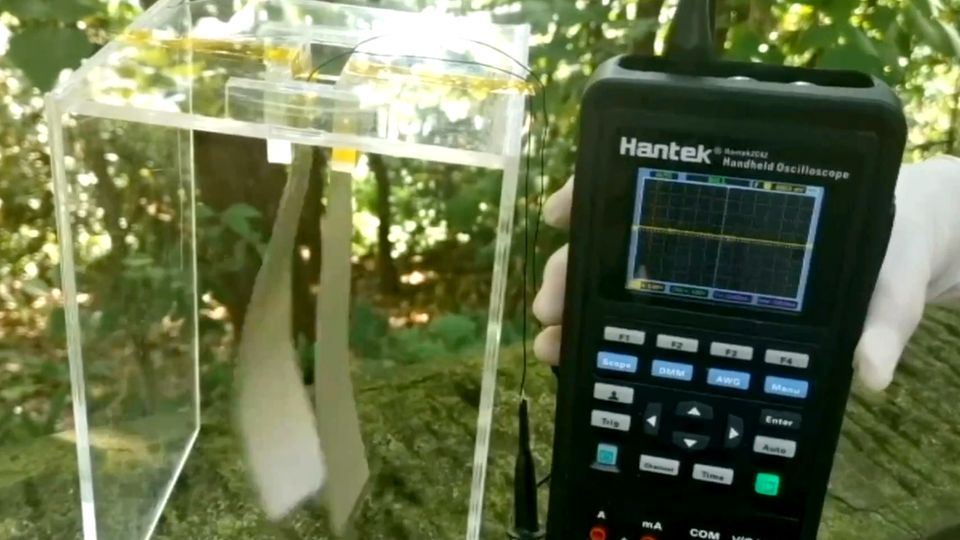Strong magnets tame the plasma for nuclear fusion, a magnet has now been developed at MIT that only requires a seventh of the energy for the task. This paves the way for commercial power generation.
To stop the planet from heating up, the world is looking for an energy source that does not emit CO2. An “eternal” candidate is nuclear fusion, it promises infinite energy and that without the risks of today’s nuclear power plants.
Soviet scientists laid the theoretical foundations for a fusion reactor back in the early 1950s, but so far it has not been possible to solve the technical problems of such a tokamak reactor. This type of reactor looks like a twisted donut, in it conditions like on the sun are to be created artificially in order to bring about a nuclear fusion in a plasma ring. That means extremely hot temperatures and very high pressures. They are generated by electro magnets. Magnetic technology is crucial in order to move from experimental apparatus into the vicinity of an electricity-generating reactor. They must not consume more electricity than will result from the merger.
Net energy is crucial
Now the Commonwealth Fusion Systems (CFS) and the Plasma Science and Fusion Center (PSFC) of the Massachusetts Institute of Technology have achieved a breakthrough. Your magnet is strong enough to tame the plasma, and yet it will still be possible to generate “net energy”. “This is a big deal,” said Andrew Holland, chairman of the board of the Fusion Industry Association, to the television broadcaster “CNBC”. “This is not hype, this is reality. As the entire fusion industry advances, we are seeing a new, clean, sustainable and always available energy source emerging,” said Holland.
During the test, the magnet only consumed about a seventh of the energy of its predecessor. So far it has not been possible to get net energy from the merger. So far, all of the energy generated in fusion reactions has been used to initiate and maintain the reaction. “No company, no university, no national laboratory and no government has so far achieved the goal of the cost-covering merger,” said Andrew Holland.
High temperature superconductors
The progress was made possible because high-temperature superconductors were used. With superconductivity, the current resistance drops to zero. This effect occurs at temperatures close to absolute zero. But with special materials it can be possible to push the temperature limit upwards. Hence the name high-temperature superconductor. And only when there is less extreme cooling can the technology be used commercially. High-temperature superconductivity is a key technology that nuclear fusion is not the only one waiting for it. All kinds of electrical devices in medicine, for example, would benefit from an easy-to-manufacture superconductor. It could be used to build power lines as long as today’s natural gas pipeline, and magnetic trains also depend on it.
Fast timing
You have to qualify: The Americans are not far in a net merger either, because their reactor does not yet exist. The magnets are slated to be used in a test facility called SPARC, which is already under construction and scheduled to go live in 2025. SPARC is not a conventional power plant, but a demonstrator that will generate energy for the first time. The experience with SPRAC is to flow into a fusion power plant called ARC, which is to go into operation as early as the beginning of 2030. The short intervals make it clear that the systems are developed and built in parallel, as it were.
For nuclear fusion to play a role at all, the development of the must take place much faster than in the past 50 years. In addition, strict cost control is necessary. Critics fear that if nuclear fusion becomes possible, it will only provide absurdly expensive electricity.

Race to nuclear fusion
It is interesting that the US program is also pursuing the idea of a tokamak reactor with continuous fusion, thus following the classic path. In Great Britain, scientists are working on a fusion reactor that relies on a sequence of individual fusions – the inspiration here is not the sun, but the hydrogen bomb. With this technique, the plasma does not have to be tamed in a ring.
Bill Gates is one of the sponsors of the US program. The rapid pace of the private initiative is now also putting the international ITER project under pressure. The advances in the US are not unique. The Experimental Advanced Superconducting Tokamak (EAST) in China also uses superconducting magnet coils.
David William is a talented author who has made a name for himself in the world of writing. He is a professional author who writes on a wide range of topics, from general interest to opinion news. David is currently working as a writer at 24 hours worlds where he brings his unique perspective and in-depth research to his articles, making them both informative and engaging.




